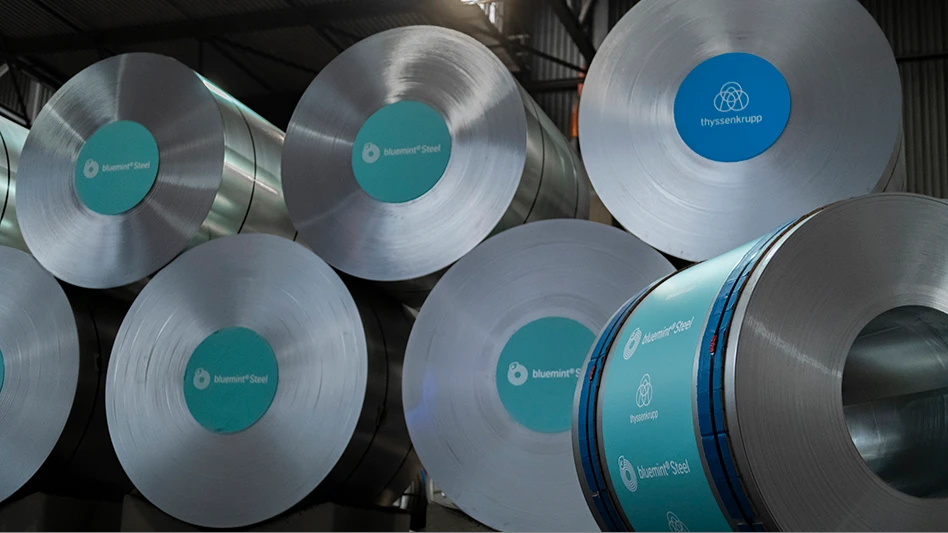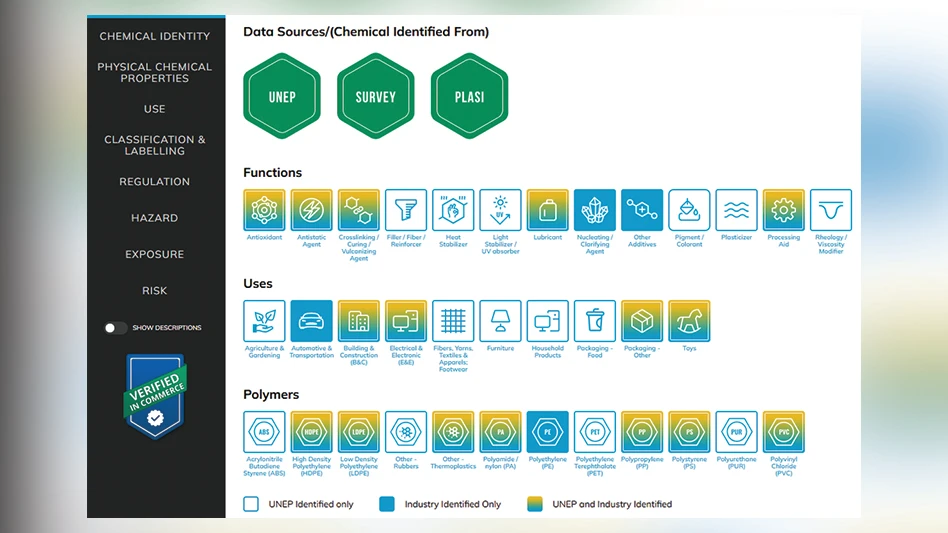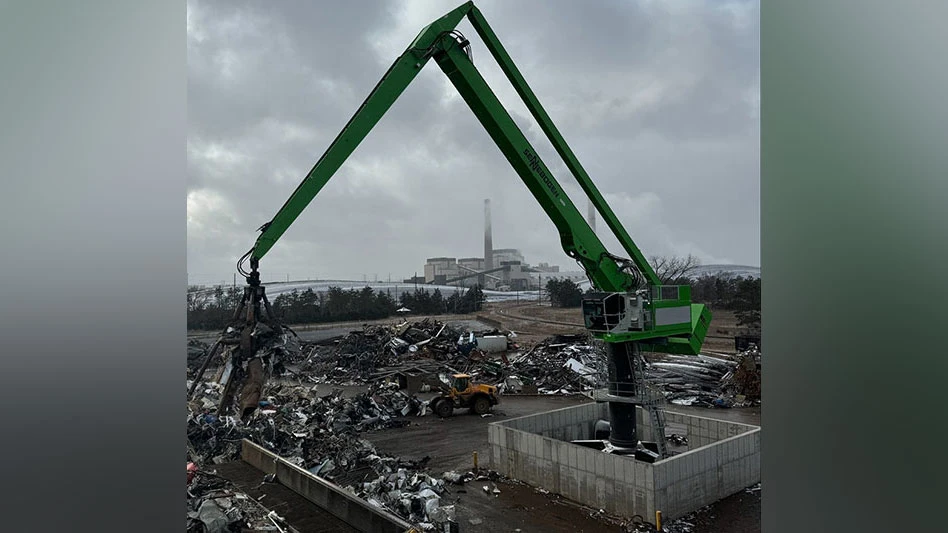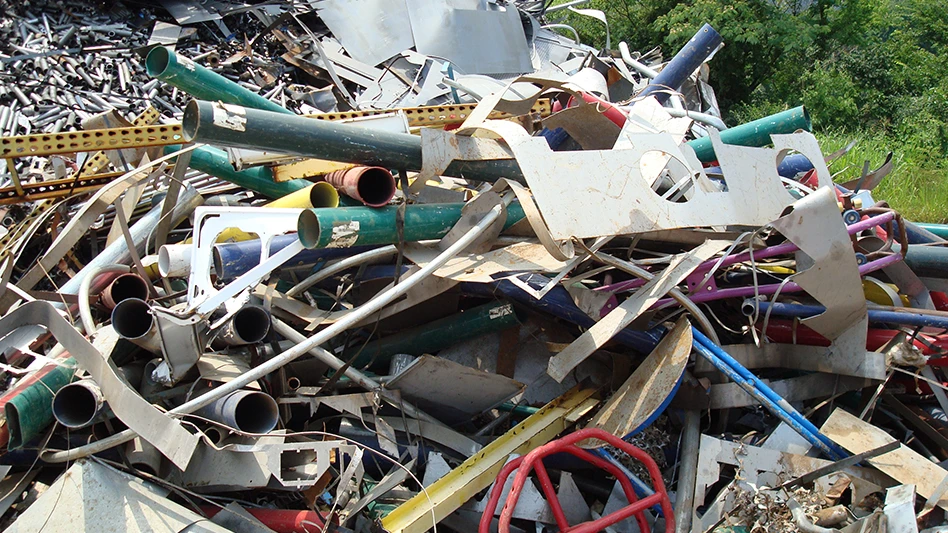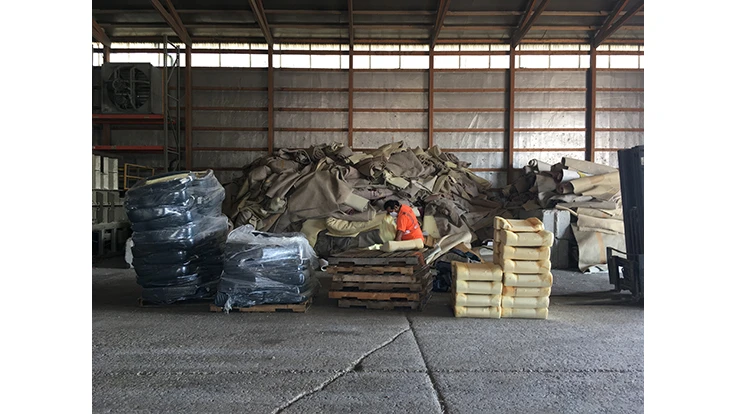
Do you ever wonder where old Amtrak train seats end up?

When it’s time to update train cars, the old seats are taken to Atlanta to get disassembled. The cushions go to a carpet recycler in Indianapolis and the leather seats arrive at People for Urban Progress (PUP), an Indianapolis-based nonprofit that recycles materials for urban reuse projects.
PUP’s recycling team takes the worn leather seats, cleans them up using an eco-friendly dry cleaning process, cuts them down and turns them into high-end handbags.
 “They spend 10 years as this vital piece of transportation, then they have this whole other journey on their way to be recycled,” says Andrea Cowley, executive director of PUP. “We’re advancing the conversation of reuse. What we’re trying to do around here is elevate reuse and recycling.”
“They spend 10 years as this vital piece of transportation, then they have this whole other journey on their way to be recycled,” says Andrea Cowley, executive director of PUP. “We’re advancing the conversation of reuse. What we’re trying to do around here is elevate reuse and recycling.”
When Amtrak, Washington, decided to refurbish the inside of 100 train cars from the Acela Express, Kara Angotti, Amtrak senior sustainability manager and PUP fan, sent the organization a few old leather seats to see what they would turn them into.
The seats were dirty. Some had gum, coffee and ice cream smears, but out of that came something beautiful.
“One of the main objectives of this upcycling project is to divert as much waste from landfills as possible,” Angotti says. “We have set a corporate recycling target of 20 percent by 2020 and this project will help us achieve that goal.”
The project is also an opportunity to give leather scraps a new life.
“Right now, we’re working on taking the scarps and rethinking those over the course of the project,” Cowley says. “In the end, everything gets recycled.”
Michael and Jessica Bricker started PUP as two citizens concerned about their city's struggling transit, wasteful construction practices, "mediocre design" and "under-used public spaces." In fall 2008, Bricker knew the RCA/Hoosier Dome was slated for demolition and wondered what would happen to the building's iconic white roof.
They ended up diverting 13 acres of Teflon-coated fiberglass from a local landfill. They bought a sewing machine, rented a small studio and started to make things. The wallets and messenger bags made from the arena roof helped raise money for larger reuse projects.
The organization became a local hero when it built bus stops from old baseball stadium seats and repurposed tons (literally) of redwood from Indiana University into fieldhouse seats, seatbelts and sports banners.
“When we look at cities, they’re surrounded by resources and there needs to be conversations about what we're going to be doing with all these resources once their original purpose has been met,” Cowley says. “It’s all about rethinking cities and waste and what were can do with it to make it useful.”
The Amtrak project will salvage more than 12,000 pieces of leather or 6,000 train seats from landfill. The organization looks forward to working with larger brands and making an impact beyond Indy.
Latest from Recycling Today
- Associations ask for effective EPR to drive textile circularity in Europe
- GESA report claims 72 countries recycled EPS in 2023
- Report: Saica exploring recycled paper mill project in Dayton, Ohio
- Hydro’s Alumetal to meet 15 percent of its energy demands through solar
- CSA Group publishes standard defining plastics recycling in Canada
- Second Cyclyx Circularity Center to be located near Fort Worth, Texas
- Sennebogen machinery keeps material moving at German recycling plant
- Tenamec adds Virginia dealership
